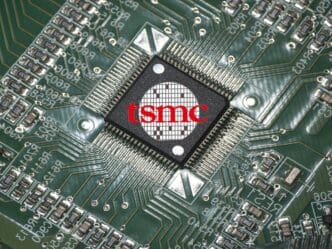Executive Summary
The Story So Far
Why This Matters
Who Thinks What?
The accelerating demand for artificial intelligence (AI) chips is significantly bolstering the growth prospects of key technology companies, including Taiwan Semiconductor Manufacturing (TSMC) and Applied Digital, according to a recent analysis by Harsh Chauhan published on October 28, 2025. This trend is occurring amid a robust market performance, with the S&P 500 index gaining nearly 15% year-to-date and 25% over the past six months, while the Nasdaq-100 Technology Sector index saw a 42% increase in the same six-month period.
Market Dynamics and AI Catalyst
Technology stocks have been a primary driver of the broader market’s impressive rally in the latter half of 2025. The pronounced gains in the Nasdaq-100 Technology Sector index underscore the pivotal role of innovation in current market strength.
Artificial intelligence stands out as a major catalyst for this growth, fostering a substantial increase in demand for AI infrastructure, including chips, servers, and data centers. Companies and governments are investing heavily to develop and deploy AI models, capitalizing on the benefits of generative AI technologies.
AI Chip Market Expansion
Market research firm Gartner projects that sales of AI accelerator chips and general-purpose computing chips designed for AI workloads could surpass $476 billion this year. This represents a significant increase from $279 billion in the previous year, highlighting the rapid expansion of the AI hardware market.
Taiwan Semiconductor Manufacturing (TSMC)
Taiwan Semiconductor Manufacturing (TSMC), trading under the ticker TSM, is positioned to benefit substantially from this surge in AI chip demand. As the world’s largest third-party chip manufacturer, TSMC fabricates chips for a diverse range of clients, serving markets such as data centers, smartphones, and personal computers, all of which are experiencing healthy growth driven by AI adoption.
The company’s growth trajectory has shown improvement in recent quarters. TSMC anticipates a mid-30% increase in revenue for 2025, an upward revision from its earlier estimate of approximately 30% growth, following a 30% revenue jump in 2024. McKinsey estimates that $3 trillion of the projected $5.2 trillion investment in AI data centers through 2030 will be allocated to semiconductors and other computing hardware, setting the stage for sustained growth for TSMC given its dominant market position. The company’s shares are currently trading at 25 times forward earnings.
Applied Digital’s Data Center Expansion
Applied Digital (APLD), a company specializing in the design, construction, and operation of AI data centers, is also experiencing rapid growth. The company reported an 84% year-over-year increase in revenue in its most recent quarter, reaching $64.2 million.
Applied Digital projects an estimated $11 billion in contracted lease revenue over the next 15 years from its initial data center campus in North Dakota. The company has also initiated construction on a second data center complex, expected to reach full capacity by 2027. Goldman Sachs estimates that overall data center demand could grow by 50% by 2027, reaching 92 gigawatts, with potential for further acceleration due to AI. Applied Digital has a development pipeline of 4 GW specifically for AI-focused data centers.
Despite a 337% surge in its stock price this year, leading to a valuation of 37 times sales, analysts forecast impressive revenue growth for Applied Digital. Should the company achieve $970 million in revenue within a few years and trade at half its current sales multiple, its market capitalization could nearly double to $18 billion, suggesting significant long-term return potential.
Outlook
The robust demand for artificial intelligence capabilities is reshaping the technology sector, providing substantial growth opportunities for companies at the forefront of AI chip manufacturing and data center infrastructure. Both Taiwan Semiconductor Manufacturing and Applied Digital appear well-positioned to capitalize on these trends, driven by increasing investment and adoption of AI technologies across various industries.







